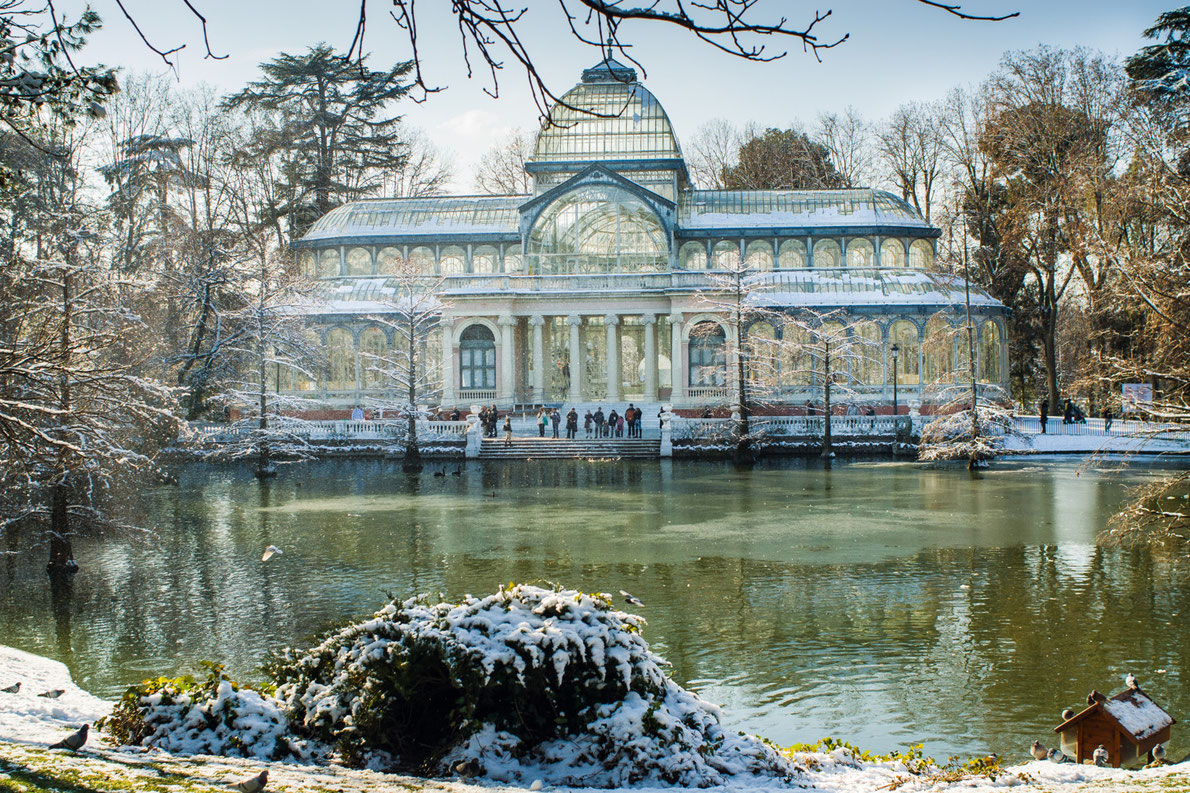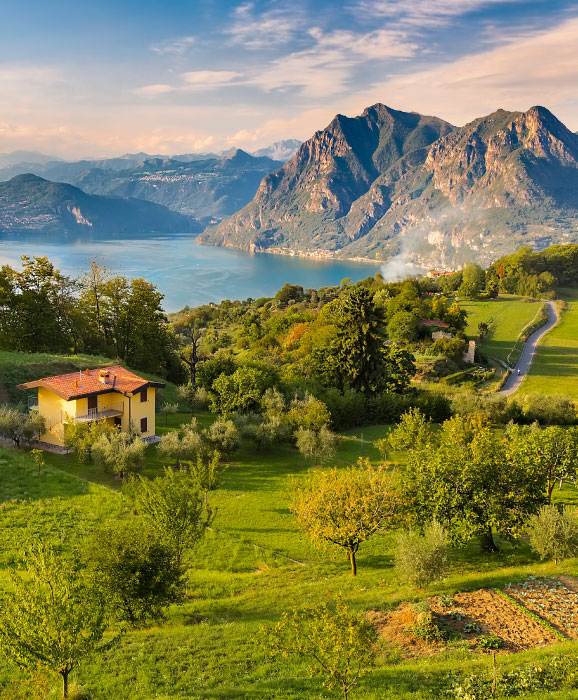Greenhouses which are as beautiful
as the plants they contain
Greenhouses are amazing constructions. They help bring cultivated plants worldwide to Europe. Greenhouses are historic sites and places to discovery and admire. Book your your hotel, guesthouse, B&B or apartment at the best price guaranteed and discover a selection of the most beautiful greenhouses in Europe.

1. The Royal Greenhouses
Laeken - Belgium
During the 19th century, progress in construction techniques, especially the use of metal and glass as construction materials, made a new type of building possible: the greenhouse.
In 1873, architect Alphonse Balat designed for King Leopold II a complex of greenhouses which complement the castle of Laeken, built in the classical style. The complex has the appearance of a glass city set in an undulating landscape.
The monumental pavilions, glass cupolas, wide arcades that cross the site like covered streets, are much more than an anecdote on the architectural applications of iron and glass or on little greenhouses of exotic plants. What the Royal Greenhouses express concerns architecture and, specifically, a major construction programme: the "Ideal Glass Palace". (©monarchie.be).

2. Palace of Cristal - El Retiro
Madrid - Spain
El Retiro Park is part of the city´s historical heritage and botanical patrimony inherited from past centuries. Once a recreation area for the Royal Family, it has become a very popular park and is central to the city´s image.
The first mention ever of this park goes back to the era of the Catholic Kings. Founders of the Jerónimos Monastery (Monasterio de los Jerónimos), a part of them were used as royal lodgings, called ‘the Quarters’, which made this area into the temporary royal household. Under Felipe II it became a place for taking a break from the court life, as well as to enjoy religious retreat in, which it owes the present name to. (©esmadrid.com).

3. Palm House at Kew Gardens
London -England
Experts consider Kew’s Palm House as the most important surviving Victorian iron and glass structure in the world. It was designed to accommodate the exotic palms being collected and introduced to Europe in early Victorian times.
The project was pioneering, as it was the first time engineers had used wrought iron to span such large widths without supporting columns. This technique was borrowed from the shipbuilding industry; from a distance the glasshouse resembles an upturned hull. The result was a vast, light, lofty space that could easily accommodate the crowns of large palms. (©kew.org).

4. The Royal Botanic Garden
Edinburgh - Scotland
The Royal Botanic Garden Edinburgh (RBGE) was founded in the 17th century as a physic garden. Now it extends over four Gardens boasting a rich living collection of plants, and is a world-renowned centre for plant science and education. (©rbge.org).

5. Botanical Garden & Museum
Berlin -Germany
Plunge in this green oasis and take off for a trip far away from the fuss of the city. As many people say, time will run slower here. And after the garden, deepen your impressions in our astounding botanical museum. Admire extraordinary exhibits and let yourself be fascinated by the meticulous passion that the most eminent botanists instilled in their collections. (©bgbm.org).

6. The Palm House
Belfast - Northern Ireland
Botanic Gardens is home to the Palm House and the Tropical Ravine.
The Palm House contains a range of tropical plants, hanging baskets, seasonal displays and birds of paradise, and is one of the earliest examples of a glasshouse made from curved iron and glass. It shows how advances in glasshouse technology allowed horticulturists to grow exotic plant species during the Victorian period.
The building was designed by Sir Charles Lanyon, who also helped design parts of nearby Queen's University. The foundation stone was laid in 1839 and the two wings were completed in 1840 by leading ironmaster, Richard Turner. The dome was added in 1852. (©belfastcity.gov.uk).

7. The Botanical Garden
Copenhagen - Denmark
The Botanical Garden is part of the Natural History Museum of Denmark at the University of Copenhagen. The garden contains the largest collection of living plants and also holds three gene banks. The garden is affiliated to the largest danish herbaria collections with plants and fungi, and is furthermore linked to the central library for botanical literature in Denmark, Botanisk Centralbibliotek. (©botanik.snm.ku.dk).

8. Kaisaniemi Botanic Garden
Helsinki - Finland
The outdoor garden, covering approximately four hectares, attracts the visitor to experience the world of plants. In summertime, perhaps the most attractive part of the grounds is the central garden, an open area with ponds and flowers, bordered by the glasshouses and rose bushes. A historic stone building envisioned as the king’s castle now houses a herbarium in the middle of the garden.
Ten glasshouses open to the public offer a glimpse into the plant life of torrid deserts, humid rainforests and tropical wetlands. Come and see the world’s biggest seed, or find out what it means when someone says, ‘It’s a jungle out there!’ (©luomos.fi).

9. The Jardin Botanique
Lyon - France
The Jardin botanique de Lyon (8 hectares), also known as the Jardin botanique du Parc de la Tête d'Or, is a municipal botanical garden located in the Parc de la Tête d'Or, Lyon, Rhône, Rhône-Alpes, France. It is open weekdays without charge.
The garden was established in 1857 as a successor to earlier botanical gardens dating to 1796, and now describes itself as France's largest municipal botanical garden. Today it contains about 15,000 plants, including 3500 plants of temperate regions, 760 species of shrubs, a hundred species of wild roses, 750 varieties of historical roses, 200 varieties of peonies recognized by the Conservatoire Français des Collections Végétales Spécialisées (CCVS), 1800 species of alpine plants, 50 varieties of water lilies, and 6,000 species in its greenhouses. (©CC).

Plan your trip to Europe
-
Hotels, Apartments, B&B...
Fresh deals every single day
Thousands reviews you can trust
-

Tours, Sightseeing & Activities
Discover Europe’s biggest collection of things to do and guided tours.
Whatever you want to do you’ll find it here.
Best in Europe.
Your ultimate bucket list to travel in Europe





















































